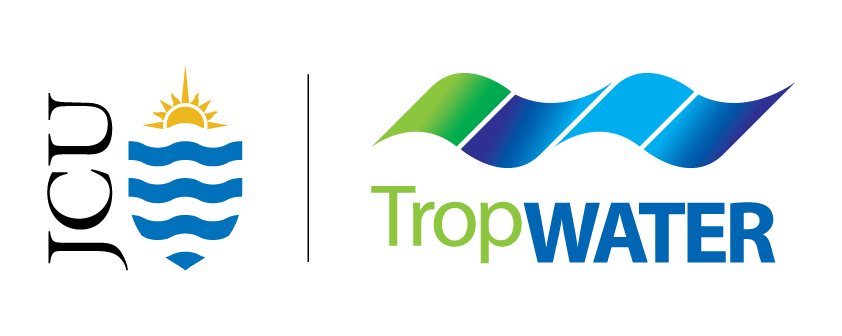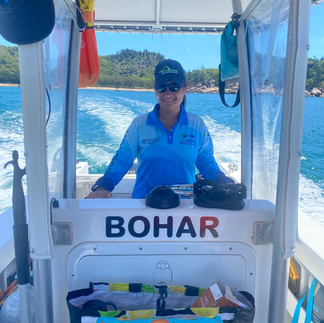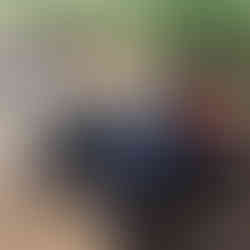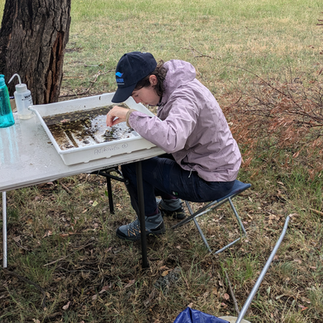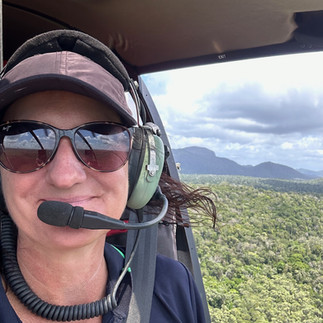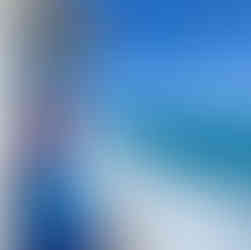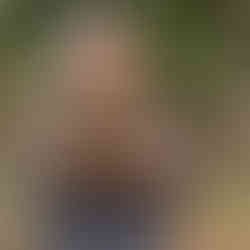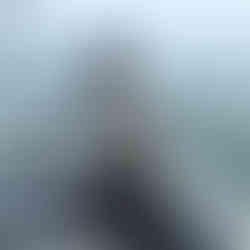Celebrating the work of women in science
- emmarehn5
- Feb 11
- 8 min read
Updated: Feb 20

To celebrate the International Day of Women and Girls in Science (11 February), we’re highlighting some of the many women doing amazing work with TropWATER across freshwater and marine sciences.
Read on to learn more about the work of Hayley Brien, Dr Maya Srinivasan, Dr Sarah McDonald, Dr Catherine Collier, Dr Caitlin Smith, Dr Mélanie Hamel, and Dr Samantha Tol.
Hayley Brien
Hayley Brien monitors the health of seagrass along the Great Barrier Reef Marine Park as part of the Great Barrier Reef Marine Park Authority's Reef Rescue Marine Monitoring Program (MMP) and Seagrass Watch programs. She spends her time walking around seagrass meadows at low tide, dropping cameras off the side of boats to find seagrass at high tide, and being amazed by what she sees.
What led you to a career in science?
Nerdy answer is: I like learning new things. Science is such a MASSIVE field, and one in which you are always learning! I ask a lot of questions; more often than not I'm asking the 'Who, What, When, Where, Why's and the 'What if's. The Great Barrier Reef (GBR) led me to a career in marine science. My first visit to the Reef inspired me to pursue a career as a marine scientist.
"There is always something to see on the Reef, and thus always questions to ask!"
What’s the best part of your job?
The places I go and the people I meet! I consider myself extremely lucky to have seen as much of the GBR that I have. I get to collaborate with fellow passionate people. A real highlight is engaging with First Nations peoples of the GBR and northern Australia.
What are some of the challenges as a woman working in science?
Although I LOVE field work – particularly to remote places – travelling can take a toll on your health and being away from loved ones, particularly on birthdays, anniversaries etc., is hard. My calendar is organised chaos! I also found out early that it wasn't necessarily what I knew, but who I knew. I moved interstate to study and I didn't know anyone, let alone female scientists who could act as role models to help navigate challenges. At any chance I get, I be that person to the new generation of women in science.
My best tip for aspiring women in science is never to give up! Passion and enthusiasm go a long way. My grandad gave me the best advice. He said: 'do what you love, and call it work'. So far, I haven't worked that much.
Dr Maya Srinivasan
Dr Maya Srinivasan is a coral reef ecologist who spends a lot of time underwater counting, observing or catching fish. She describes the rest of her time as being spent organising trips, analysing data from those trips, and writing reports and papers.
What led you to a career in science?
I have loved animals and nature since I was a child. When I was in high school, I decided to do either zoology or marine biology at Uni.
"Then I did my first dive on a coral reef… I was in absolute awe and decided I had to do marine biology!"
What’s the best part of your job?
The best part of my job is getting paid to do what I love and contributing to coral reef management and conservation.
What are some of the challenges as a woman working in science?
My career took a hit when I had children as being pregnant and having young children isn’t compatible with diving-based field research. I didn’t go the traditional route of PhD to post-doc as I had my daughter during my PhD – but I did finish my PhD and thanks to my husband doing his fair share of the parenting, and my parents’ help, I have managed to continue working in science. I think in general it’s a lot easier for women in science now than 10-20 years ago, workplaces are a lot more supportive, but there is still room for improvement.
Dr Sarah McDonald
Dr Sarah McDonald is a trained ecotoxicologist but describes herself as an all-rounder ecologist who works in both freshwater and terrestrial environments. The key theme of her job is enabling end-users to measure and manage their ecological impacts, mostly in the mining and agricultural sectors.
What led you to a career in science?
"The first woman in science I knew was my mother, who worked as a microbiologist and encouraged me greatly to pursue science."
Throughout my childhood I spent a lot of time outside on my parent’s bush block in western Victoria, taking photos of birds and looking at bugs I collected from the dam under my mother’s microscope.
At school and university, I focused on biology and chemistry, originally applying to undertake veterinary medicine at Melbourne University. After my first few years I realised I much preferred being outside and getting my hands covered in dirt, so I switched to zoology and botany and eventually pursued an Honours year and PhD with my incredible supervisor Kath Hassell.
What’s the best part of your job?
The best part of my job is the fieldwork I get to undertake, and the beautifully remote places I am lucky enough to explore and immerse myself in. I am also very lucky to work under the supervision of Shelley Templeman who is incredibly inspiring and supportive. I am still looking at bugs that I collect from dams under a microscope, but now in a more informed way!
What are some of the challenges as a woman working in science?
The biggest challenge for me is the lack of women, or diversity in general, at higher management levels within the wider university sector, as well as other sectors I work in. It was really encouraging to see Prof Emma Johnston appointed as VC of Melbourne University as of this year, who is a keen advocate for science and increasing the participation of women in research.
Dr Catherine Collier
Dr Catherine Collier describes her work as being all about “identifying key gaps in information and finding ways to fill them”. She maps and monitors seagrass and investigates what makes seagrass ecosystems resilient. This can help us better understand the overall health of our coastal ecosystems and how we can protect them.
What led you to a career in science?
"The natural world has always fascinated me, and that combined with a deep passion for the sea meant that it was inevitable that I’d have a career in marine science."
What’s the best part of your job?
I’ll be cheeky and say three things: First, being out in the field is like a never-ending adventure—always surprising and awe-inspiring. Second, the people I work with are dedicated and talented and a joy to be around, and finally, solving problems—there’s just something incredibly satisfying about it especially when those solutions have real-world impact.
What are some of the challenges as a woman working in science?
The most significant challenge I’ve faced has been striking a balance between family life and work—something that many women can relate to. My job often requires me to be away from home for extended periods and managing that separation while maintaining my responsibilities at home is not always easy.
Dr Caitlin Smith
Dr Caitlin Smith researches human-induced impacts on marine ecosystems, focusing on how contaminants affect sea turtles and tracking changes in seagrass meadows. Her work ranges from conducting helicopter surveys and sea turtle health assessments to monitoring nesting sites.
What led you to a career in science?
It’s a funny story—I panicked when it came time to choose a major for my undergraduate degree. I picked marine science, and it turned out to be the best snap decision I’ve ever made, because I've loved every minute of it and I can't imagine doing anything else.
What’s the best part of your job?
"I love how no two days are the same."
My role combines analysing data and writing papers with fieldwork, like hands-on interactions with incredible animals, and engaging with other experts to tackle challenges in the field.
What are some of the challenges as a woman working in science?
I’m fortunate to be part of an incredibly supportive and diverse team at TropWATER, with many amazing opportunities. However, in broader contexts, I sometimes feel my voice isn’t as valued, which can leave me questioning my performance and contributions.
Dr Mélanie Hamel
Dr Mélanie Hamel supports researchers working in conservation science by applying her expertise in ecology, spatial and data analysis, conservation planning, and science communication to tackle diverse challenges. She thrives on collaborating across disciplines and with a range of stakeholders to make a tangible impact on conservation and management efforts.
What led you to a career in science?
I've always been fascinated by the natural world. As a child, I spent hours exploring ponds and rock pools with my family, identifying creatures and observing their life cycles in home aquariums. My curiosity was paired with a Cartesian mind, always seeking structure, logic, and cause-and-effect relationships in nature. This led me to study Ecology at university in France and pursue hands-on experiences, including research internships and volunteering on freshwater and marine turtles—my first ‘love.’
What’s the best part of your job?
The best part of my job is the diversity of topics I work on and the continuous learning it demands. Whether it’s analysing dugong aerial survey data, contributing to conservation policy, or bridging Scientific and Indigenous Knowledges, no two days are ever the same!
What are some of the challenges as a woman working in science?
The biggest challenge is balancing family and work duties. My husband, also a dedicated scientist and hands-on dad, plays a key role, but as he’s further along in his career, the juggle isn’t always straightforward. Supportive colleagues, flexible arrangements, and prioritising ‘me-time’ have been essential in helping me maintain this balance.
Dr Samantha Tol
Dr Samantha Tol’s role involves a combination of monitoring and experimental science in marine habitats and marine ecology, to inform management and improve conservation outcomes.
What led you to a career in science?
I have loved the ocean and the animals within it since I was a little girl. My earliest memory that sparked my interest was when a seal kissed me at the now ‘Sea Life Aquarium’ at age 6. It ignited something in me, that made me what to help conserve the ocean. This passion showed true when shortly after my mum lost me in the shopping centre and found me trying to sign-up to be a World Wildlife volunteer, where the young lady there explained that marine scientists were working from Antarctica to the equator to help the ocean. Ever since then, I have worked towards becoming a marine biologist and couldn’t be happier with my chosen career.
What’s the best part of your job?
"Knowing that my work is actively making a difference for the better is the best part of my job."
My personal career highlight to date was when I found out that the primer I developed to determine if faeces was from either a dugong or green sea turtle was used to confirm that dugongs were still present in the island of Ryukyu in the southern waters of Japan, after the IUCN had declared the population in this region as extinct.
What are some of the challenges as a woman working in science?
Working while raising a young family has been my hardest challenge. I feel that other women greatly understand the complexities of juggling parenthood with part-time and full-time work, while it has come across that many men don’t fully understand the extent of these setbacks and struggles. This has led to, in some instances, being treated as if you are not putting in enough effort to get work done by deadlines outside of work times, and not being chosen to work on some projects.
However, I do feel that this area is being highlighted and worked on, as many grant opportunities for ECRs do allow for time to be taken into account for paternity leave, and even part-time work when calculating time left as an ECR. Although, more could be done with assisting women to access grants covering child minding arrangements.
